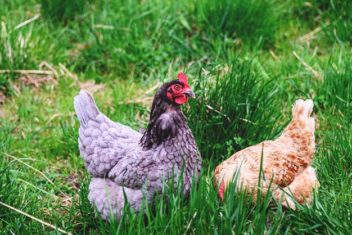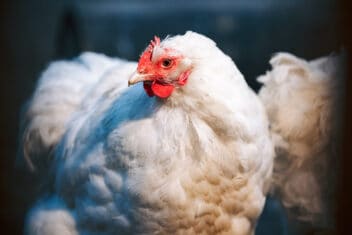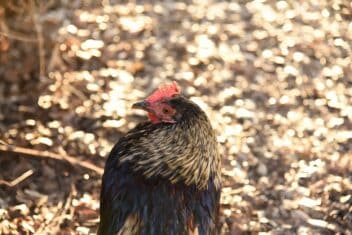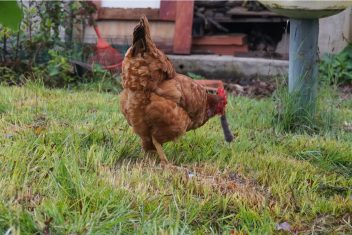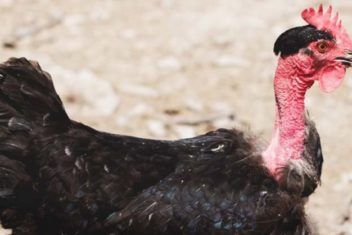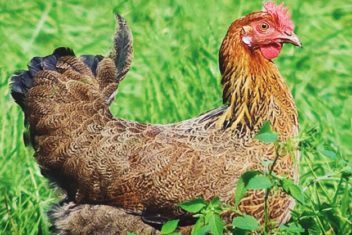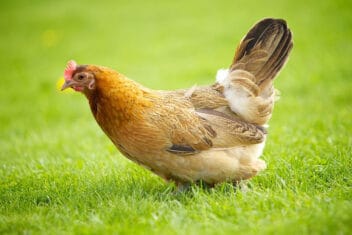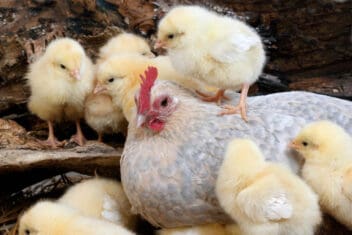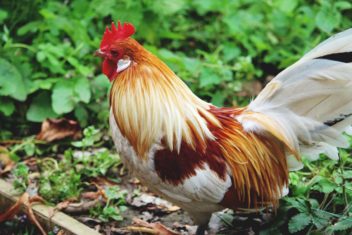If you are as passionate about your chickens as I am, you will get to know their habits well. Observing chicken droppings is another valuable way in which to monitor the health of your flock.
Chicken droppings can be a little confusing to both new and seasoned flock owners. Just when you think you know your chickens’ typical droppings, you see something a little different than usual.
But should all strange-looking droppings cause alarm? The answer depends on a variety of factors and situations.
In general, your chicken’s poop can tell you a lot about what is going on with your chickens and their current health.
So let’s take an in-depth look at the digestive system of a chicken, so it’s a bit easier to understand their excrement.
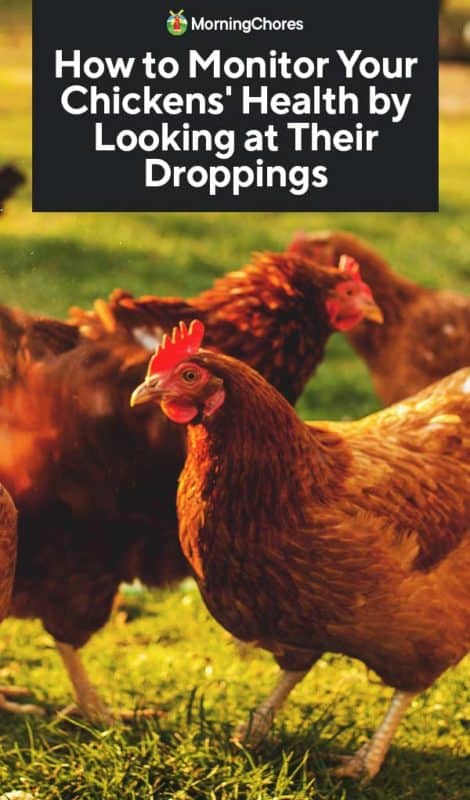
All About the Chicken Digestive System
Chickens don’t digest their food in the same way as people do. They have an interesting way of breaking down their food and processing it throughout their bodies.
First, chickens must eat stones (or grit) in order to break down the food they are consuming because they do not have teeth. The grit acts as teeth, and grind up the food a chicken eats.
So, as you can see, there’s a little more to understanding a chickens’ digestive system than you might think.
Let’s break it down, from start to finish!
- When your chicken eats some crumble, a bug, or another tasty treat, it moves from their beak to their crop. The crop is an organ that produces enzymes that help break down food. The food hangs out in the crop for a while before it moves on to the next stop along the journey, the gizzard.
- The gizzard is where all that grit does the dirty work by grinding up the food into digestible pieces.
- Next, the broken down food travels to the small intestines, and all the good stuff is absorbed into the body. Any nutrients that are imperative to a chicken’s health, is harvested in this stage of digestion.
- Here’s where things get even more interesting. After the intestines do their job, the next stop is the ceca. This is an additional organ (that most other animals do not have) that branches off of the small intestines. Here, the food ferments and more nutrition becomes absorbed. Think of it like a “catch-all” for anything the small intestines may have missed. The ceca release its content a few times a day and create the strange variations of poop that you come across daily.
- Then the cloaca combines the remaining waste with urates and expells the product through the vent.
Your chickens poop quite a few times a day, but not all droppings are made the same. The ceca, for example, will expel waste a few times a day that will appear different than other “regular” poo. (runnier)
Now let’s take a look at the typical types of chicken poop you will come across, and what they may mean:
Normal Chicken Droppings
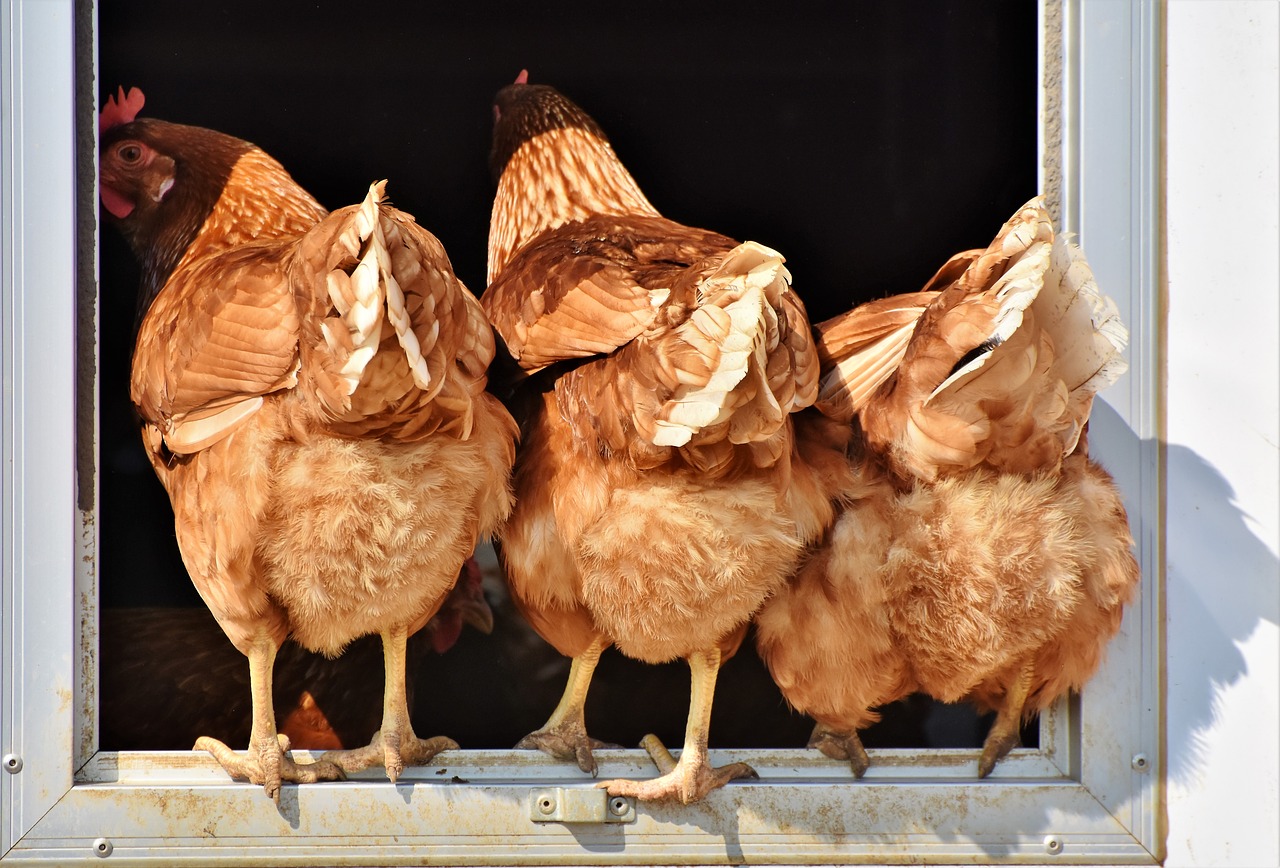
In general, there are three different types of chicken poop that you will come across in your yard. Each of these indicates that your chickens are healthy, and should not cause concern, even if they look a little different from time to time.
1. Healthy Chicken Droppings
No two instances of droppings will be the same, which isn’t surprising in any creature or critter you care for. But, chicken poop seems to stump us a bit more than other types of scat.
Chicken feces has many different appearances, and the reason behind those variations may be due to health, feed, and even the temperature.
Two fairly reliable ways to evaluate your chicken’s poop is by observing the following:
- Color: Mostly brownish or green, and often includes a blob of white.
- Consistency: It can range from pudding-like to fairly solid. If the temps are high, poop is almost always going to be more loose than typical.
2. Broody Hen Poop
You will know broody hen poop when you see it…and smell it. It’s usually large and extremely smelly.
Hens are fantastic mothers. They are usually pretty picky about their nesting boxes and keeping them clean. A broody hen will sit on her eggs all day, leaving once or twice to relieve herself and find food and water.
And that is why her droppings are larger than they would be normally. She “holds it” for as long as she can to remain on her eggs, and then does her best to move away from the nest to expel her smelly droppings.
3. Cecal Poop
When you see runny, but not watery, chicken droppings, you’re probably looking at poop that includes contents of the ceca. Remember, this is where fermentation happens, and not every dropping will include this “mixture.”
Abnormal Chicken Poop Variations
Chicken poo is almost always a puzzle, and it often looks different throughout the day. Now you know, however, that it’s normal for a variety of consistencies. Color, in a similar manner, can often depend on a variety of factors, mainly due to the type of food the chicken has consumed.
There are a few indicators that something may not be quite right with your chickens. The following types of chicken poop may be indicators of an underlying problem:
1. The Presence of Worms
I’m not gonna lie, it’s pretty shocking, and disgusting, to come across parasites in your chickens’ poop.
Worms can be found in eggs, eggshells, and yolk. The worst part? If one chicken in your flock is infected, every chicken is infected and should be treated. (Read more in our post about worming chickens for treatment)
While worms are often visible to the naked eye if you see blood in your chicken poop but no worms, there is still the possibility of a parasitic infection.
Chicken poop may also appear bloody due to a difficult egg-laying session as well.
Noticing that your chickens have worms is pretty easy, but knowing how to treat them is a different story altogether. Your best bet is to take a sample of your infected chicken droppings to your vet for identification. Your vet will be able to tell you what kind of parasite your flock has, and the best form of treatment.
2. Watery or Foamy Chicken Poop
Foamy or watery chicken droppings may be an indication of parasites, a bacterial infection, or other issues. Often, chickens who overdo the protein, or a favorite treat will have abnormal stools, so seeing foamy, watery, poop isn’t always cause for alarm.
If, however, the condition is persistent, you should quarantine your hen, and watch for other symptoms. If you have a good poultry vet, you can take your hen to be evaluated. Often, a definitive diagnosis can put your mind at ease and help you catch, and treat, illness amongst your flock before it gets out of hand.
3. Bloody Chicken Droppings
If your chickens have consistently bloody dropping, they may have contracted coccidiosis. This means your chicken may have a bacterial infection causing inflammation in the intestines.
The good news is, coccidiosis is treatable if caught early on. So if you ruled out worms or a difficult egg-laying session, coccidiosis may be the reason for bloody chicken droppings. A visit to the vet can help diagnose the infection promptly as well as provide you with treatment for the entire flock.
Conclusion
Knowing what to expect in your flocks’ droppings can help you catch disease and parasites quickly. And more often than not, the problem is treatable.
Even though it can be challenging to observe your chickens poop at close range, it can help you evaluate the health of your flock, and in some cases even save their lives.
Spend time with them frequently throughout the day to observe their habits and droppings, and with our guide above, you should now know what to watch out for.

